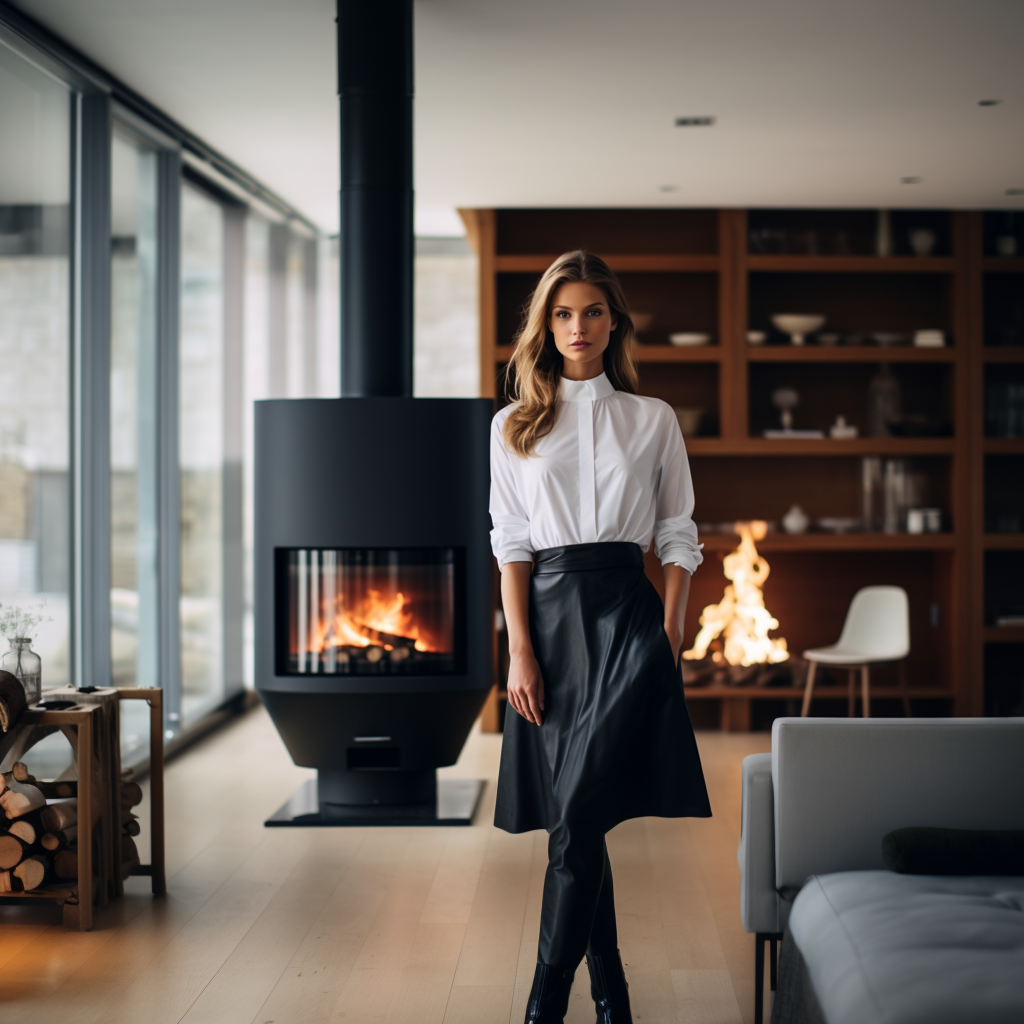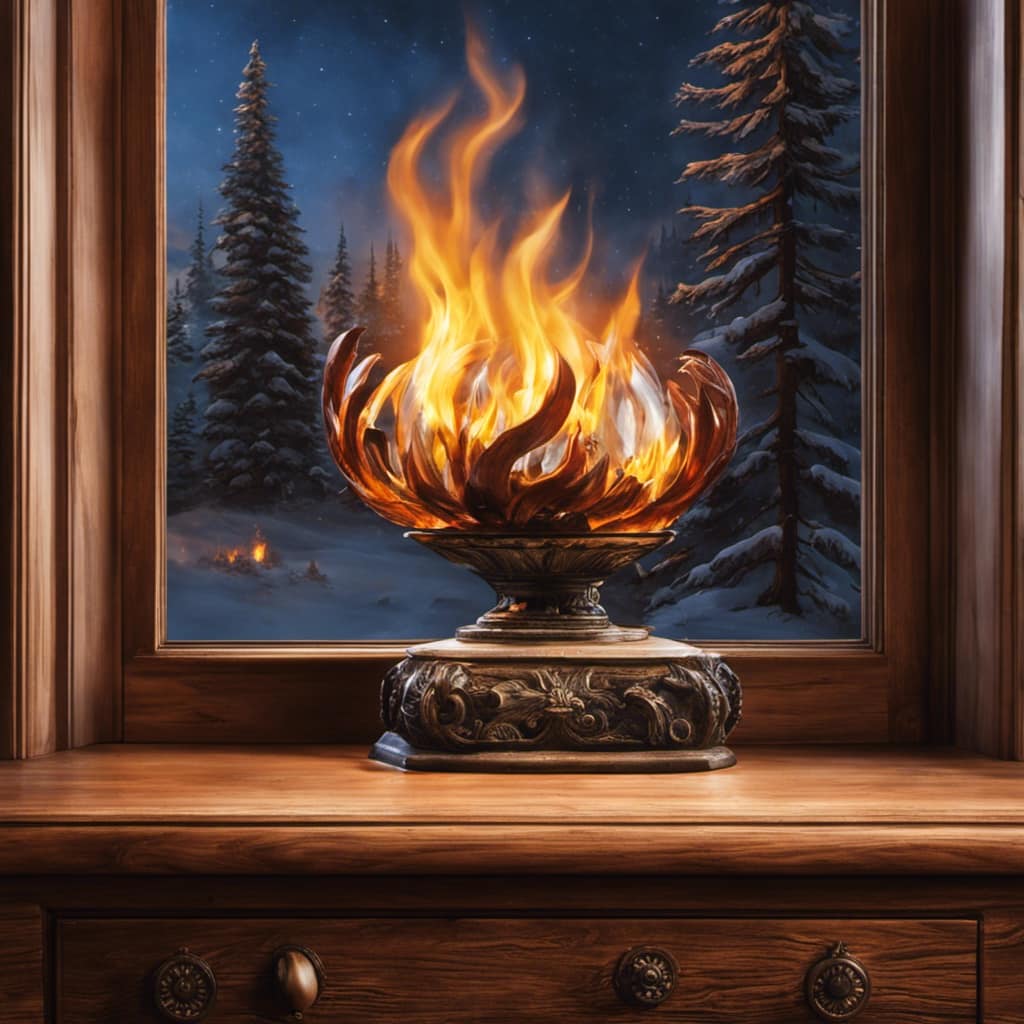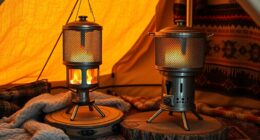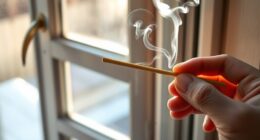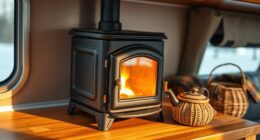
Hello everyone! Have you ever thought about why smoke is coming out of your wood stove? Let me explain it to you.
There are a few reasons this might be happening, such as insufficient draft, improper fuel usage, a blocked chimney or flue, damaged seals, or even incorrect installation.
So, let’s dive into the nitty-gritty details and figure out why your wood stove is acting up.
Key Takeaways
- Insufficient draft can cause smoke to puff out of the wood stove.
- Improper fuel usage, such as using wet or unseasoned wood, can lead to excessive smoke.
- Blocked chimney or flue restricts airflow and leads to smoky fires.
- Damaged or faulty seals can result in air leaks and affect chimney or flue performance.
Insufficient Draft
I can feel the draft in my wood stove isn’t strong enough. Insufficient air circulation can lead to smoke puffing out of the stove instead of being properly vented.
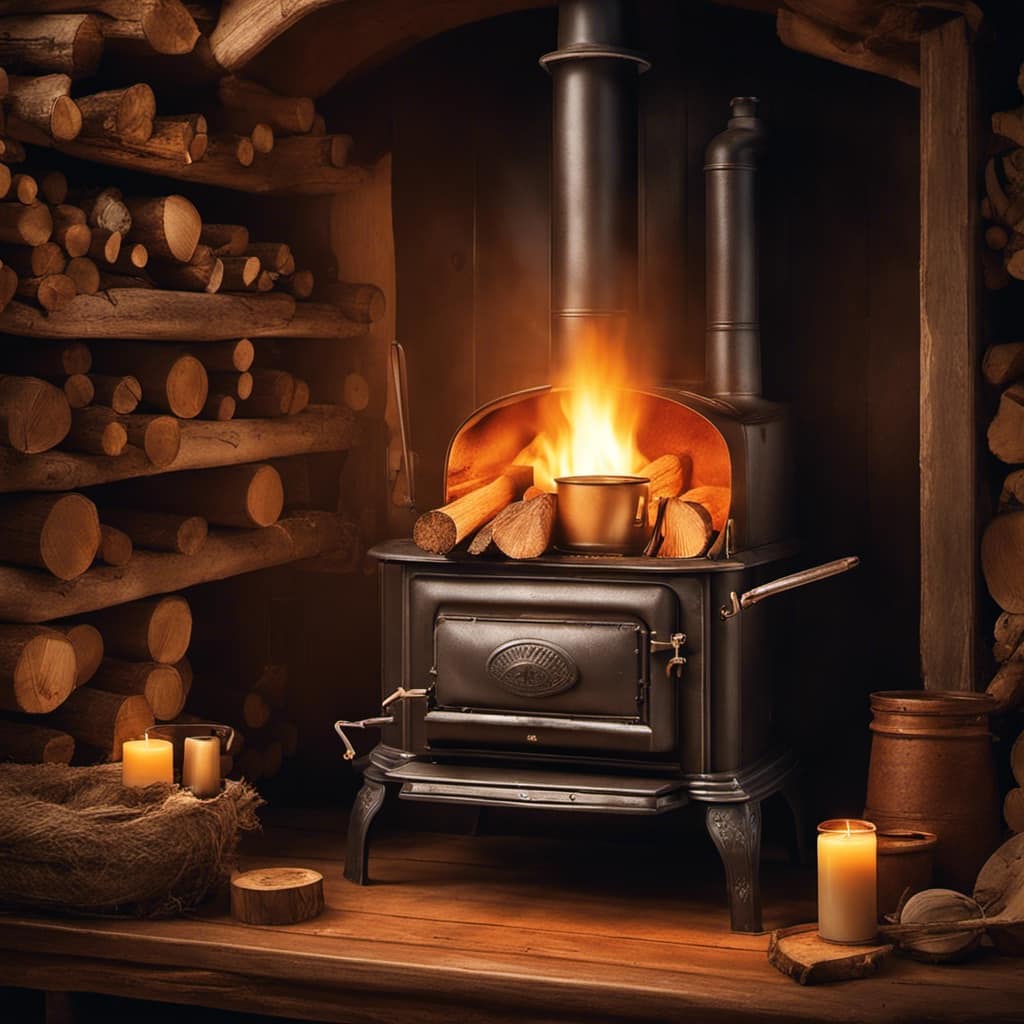
The ventilation system plays a crucial role in maintaining a good draft. The draft is created by the temperature difference between the inside and outside of the stove, causing air to flow through the stove and up the chimney.
If the draft is weak, it means that not enough air is entering the stove, causing incomplete combustion and smoke leakage. To improve the draft, ensure that the air vents are fully open and free from any obstructions.
Additionally, consider installing a chimney cap to prevent downdrafts and improve overall ventilation.
Improper Fuel Usage
Using wet or unseasoned wood in my stove can cause excessive smoke. When selecting firewood, it’s crucial to choose dry, well-seasoned wood with a moisture content of around 20%. Wet wood contains more water, which requires a higher temperature to burn off, leading to incomplete combustion and the production of smoke.
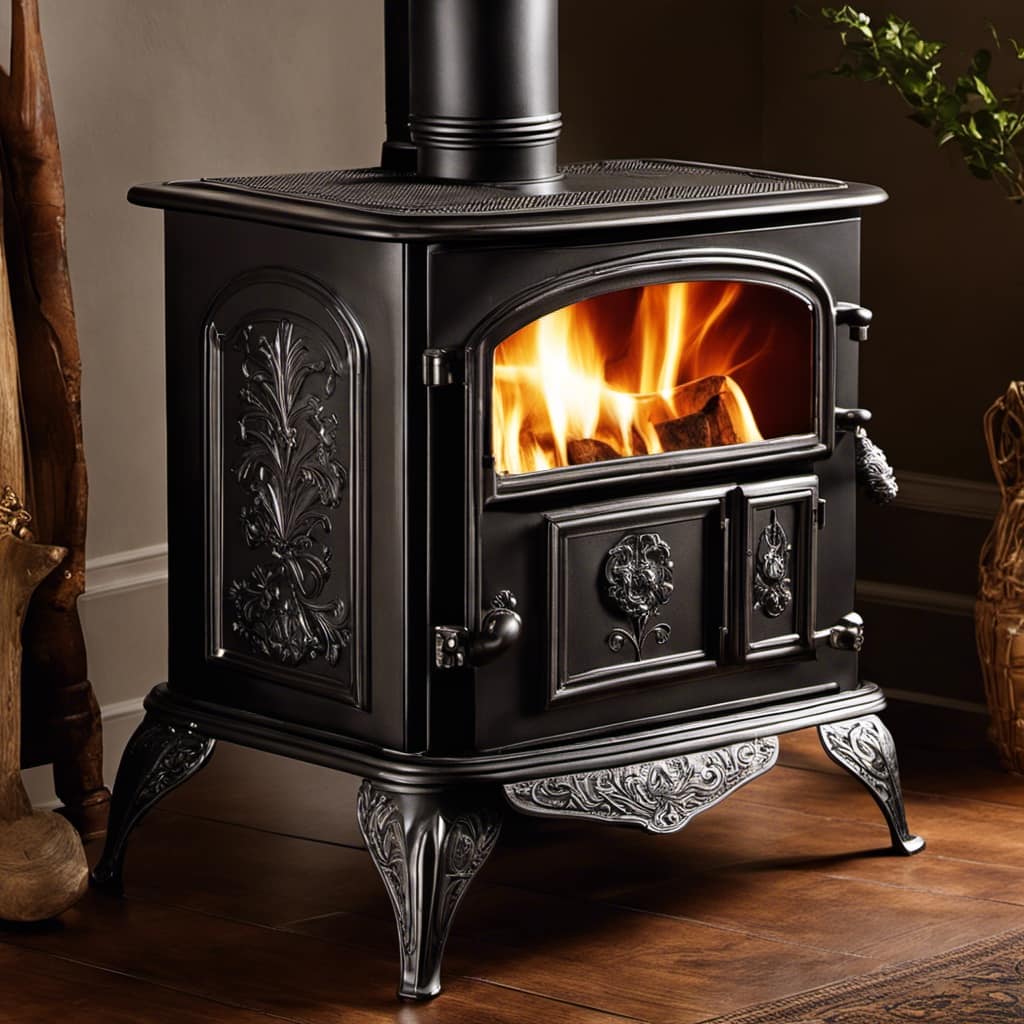
Additionally, the air intake of the stove plays a vital role in ensuring proper fuel usage. Insufficient air intake restricts the flow of oxygen to the fire, resulting in a smoldering fire and increased smoke production. To prevent this, ensure that the air intake vents are open and allow enough oxygen for a clean and efficient burn.
Now, let’s move on to the next potential cause of smoke puffing out of the wood stove: a blocked chimney or flue.
Blocked Chimney or Flue
A blocked chimney or flue can prevent proper airflow, leading to smoky fires and decreased efficiency. When the airflow is restricted, the combustion process is affected, resulting in incomplete burning of the wood and the release of smoke into the room. This not only creates an unpleasant environment but also poses health risks due to the inhalation of harmful gases and particles.
Creosote buildup is a common cause of blocked chimneys and flues. Creosote is a sticky substance that forms when wood is burned at lower temperatures. Over time, it accumulates on the inner walls of the chimney or flue, narrowing the passage and obstructing the flow of air.
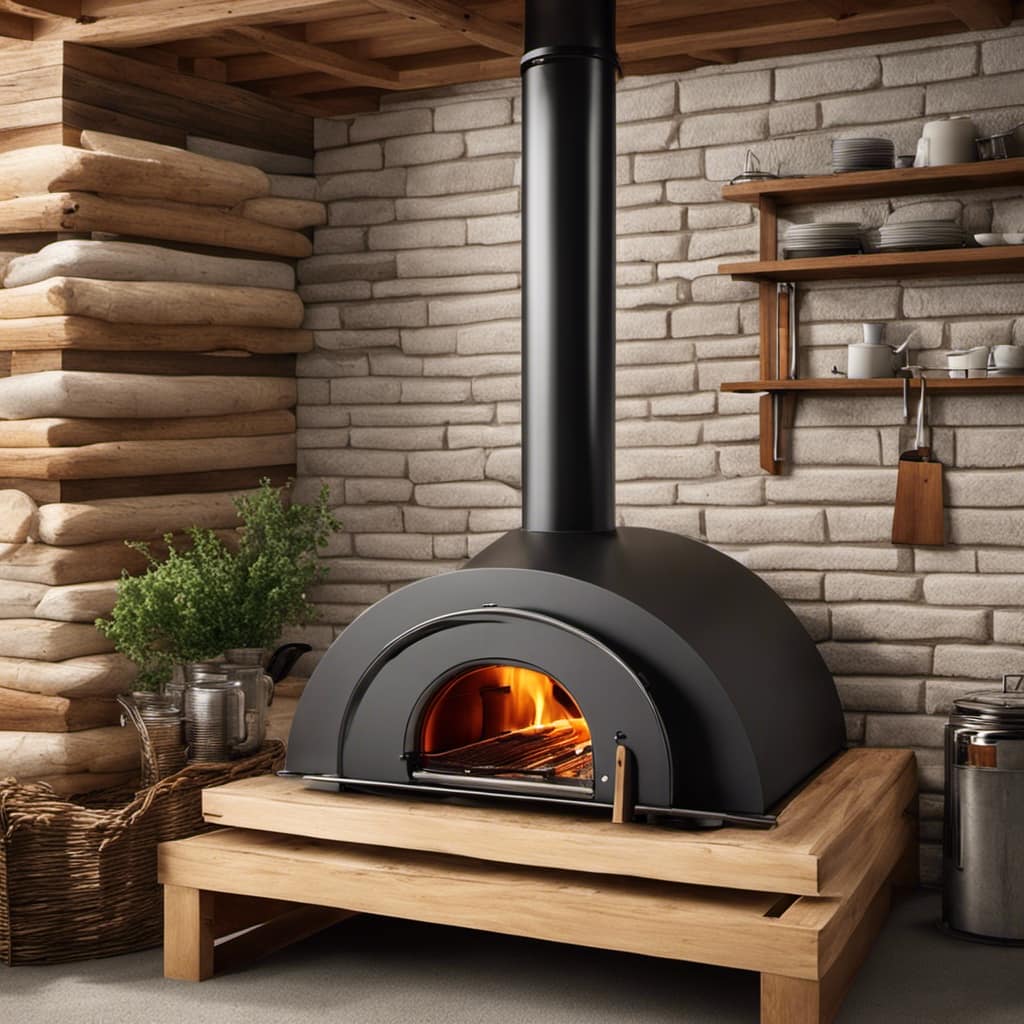
Regular cleaning and maintenance are essential to prevent restricted airflow and the dangers associated with creosote buildup.
Damaged or Faulty Seals
Damaged or faulty seals can lead to air leaks, impacting the efficiency and performance of the chimney or flue.
One common culprit for air leaks is a damaged gasket. The gasket is a seal that ensures a tight fit between the stove door and the body. Over time, the gasket can become worn, cracked, or misaligned, allowing air to escape. When this happens, the stove may not be able to maintain a proper draft, resulting in smoke puffing out into the room.
Another potential source of air leaks is a damaged seal around the flue pipe. If the seal is compromised, air can enter or exit the system, disrupting the airflow and causing smoke to escape.
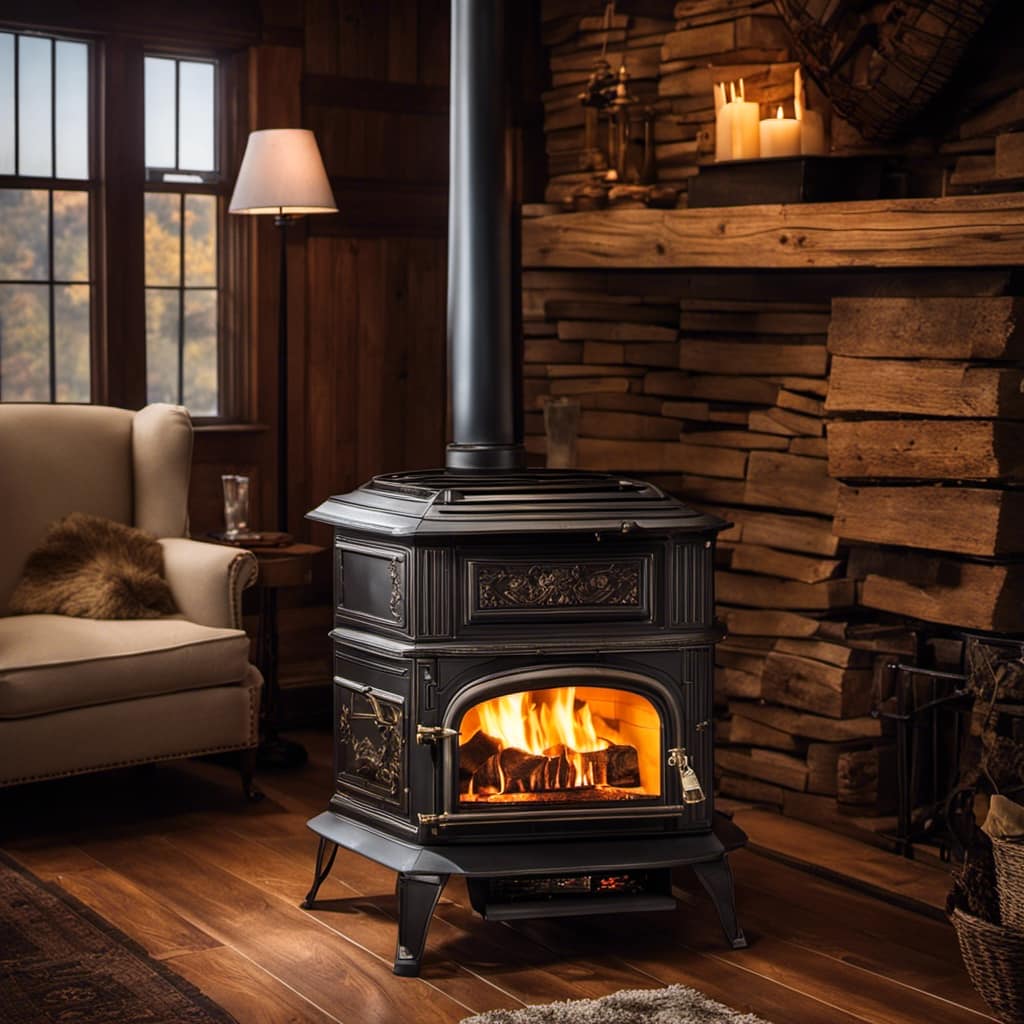
It’s important to regularly inspect and replace any damaged seals to maintain the efficiency and performance of the chimney or flue.
Incorrect Wood Stove Installation
During the installation process, I made sure to follow all safety guidelines and regulations. I understood the importance of fire safety and the proper functioning of ventilation systems.
Here are the key points to consider when installing a wood stove:
-
Ensure proper clearance: The stove should be installed at a safe distance from combustible materials, such as walls and furniture.
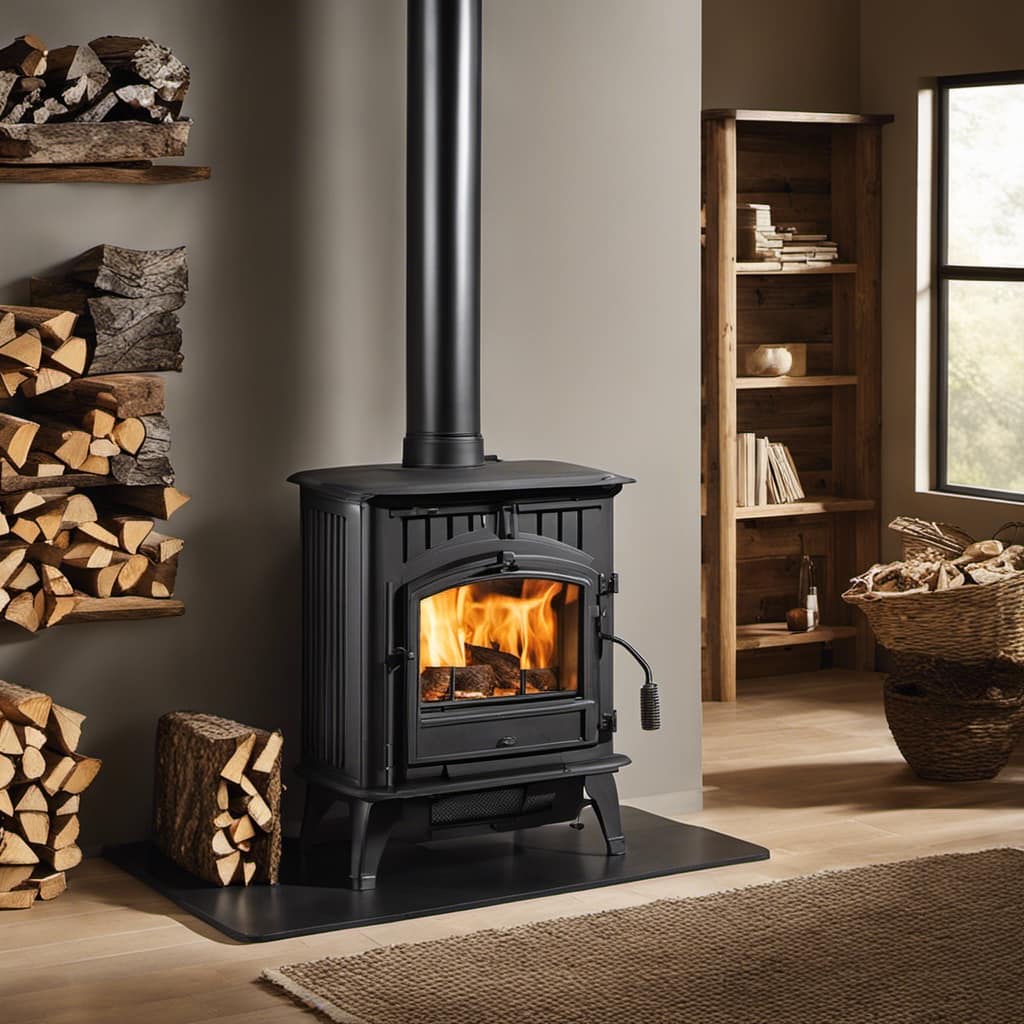
-
Use the correct flue size: The flue should be properly sized to allow for adequate ventilation and prevent smoke from escaping into the room.
-
Seal all joints: It’s crucial to properly seal all joints in the stovepipe to prevent leaks and ensure efficient operation.
-
Install carbon monoxide detectors: Carbon monoxide is a dangerous byproduct of wood burning, so installing detectors can provide an early warning in case of any issues.
Frequently Asked Questions
How Can I Increase the Draft in My Wood Stove to Prevent Smoke From Puffing Out?
To increase draft and prevent smoke puffing out of your wood stove, troubleshoot blockages. Clear the chimney, check the damper, and ensure proper air intake. Regular maintenance and cleaning will help optimize the stove’s performance.
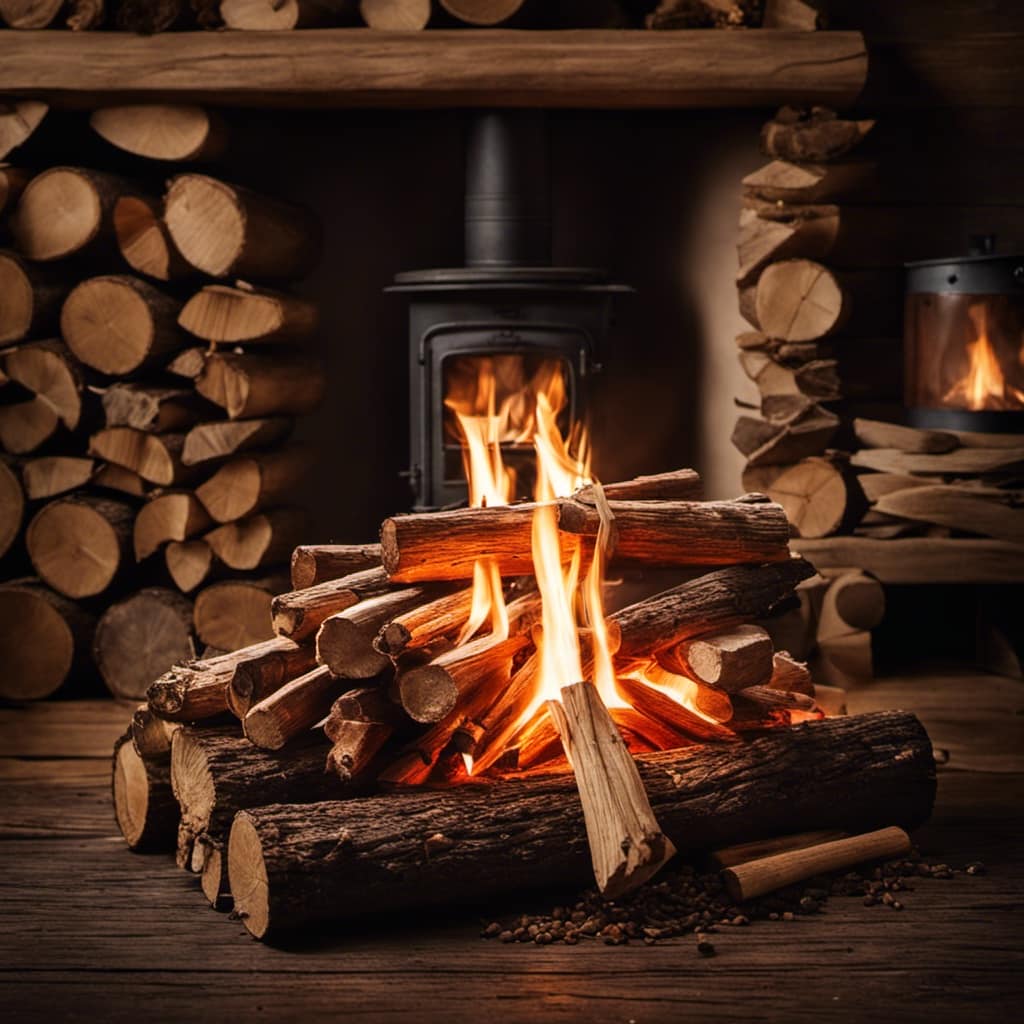
Are There Any Common Mistakes in Using Certain Types of Wood as Fuel That Could Cause Smoke to Puff Out?
Using certain types of wood as fuel in a wood stove can lead to common mistakes that cause smoke to puff out. It’s crucial to choose dry, seasoned wood to ensure proper combustion and minimize smoke production.
What Are Some Signs That My Chimney or Flue May Be Blocked and Causing Smoke to Puff Out of My Wood Stove?
If smoke is puffing out of my wood stove, signs of chimney blockage may include a strong smoky odor, visible soot or creosote buildup, or a lack of draft. To improve wood stove draft, ensure proper air flow and chimney maintenance.
Can Damaged or Faulty Seals on My Wood Stove Contribute to Smoke Puffing Out, and How Can I Check for This Issue?
Can damaged seals on my wood stove cause smoke to puff out? To check for this issue, inspect the seals for any signs of wear or gaps. Properly functioning seals are essential for efficient and safe wood stove operation.
What Are Some Key Aspects to Consider During the Installation of a Wood Stove to Ensure Smoke Does Not Puff Out?
When troubleshooting smoke puffing out of a wood stove, it’s important to consider proper ventilation during installation. Following best practices, such as ensuring a well-sealed chimney and proper air intake, can prevent smoke issues.

Conclusion
So, if you’re seeing smoke puffing out of your wood stove, it’s likely due to:
- Insufficient draft
- Improper fuel usage
- A blocked chimney or flue
- Damaged or faulty seals
- Incorrect wood stove installation
Make sure to address these issues to ensure a safe and efficient wood stove operation.
Remember, prevention is key to avoid potential hazards and keep your wood stove running smoothly.
So don’t let this issue smolder, take action now!

Growing up surrounded by the vast beauty of nature, Sierra was always drawn to the call of the wild. While others sought the comfort of the familiar, she ventured out, embracing the unpredictable and finding stories in the heartbeat of nature.
At the epicenter of every remarkable venture lies a dynamic team—a fusion of diverse talents, visions, and passions. The essence of Best Small Wood Stoves is crafted and refined by such a trio: Sierra, Logan, and Terra. Their collective expertise has transformed the platform into a leading authority on small wood stoves, radiating warmth and knowledge in equal measure.


